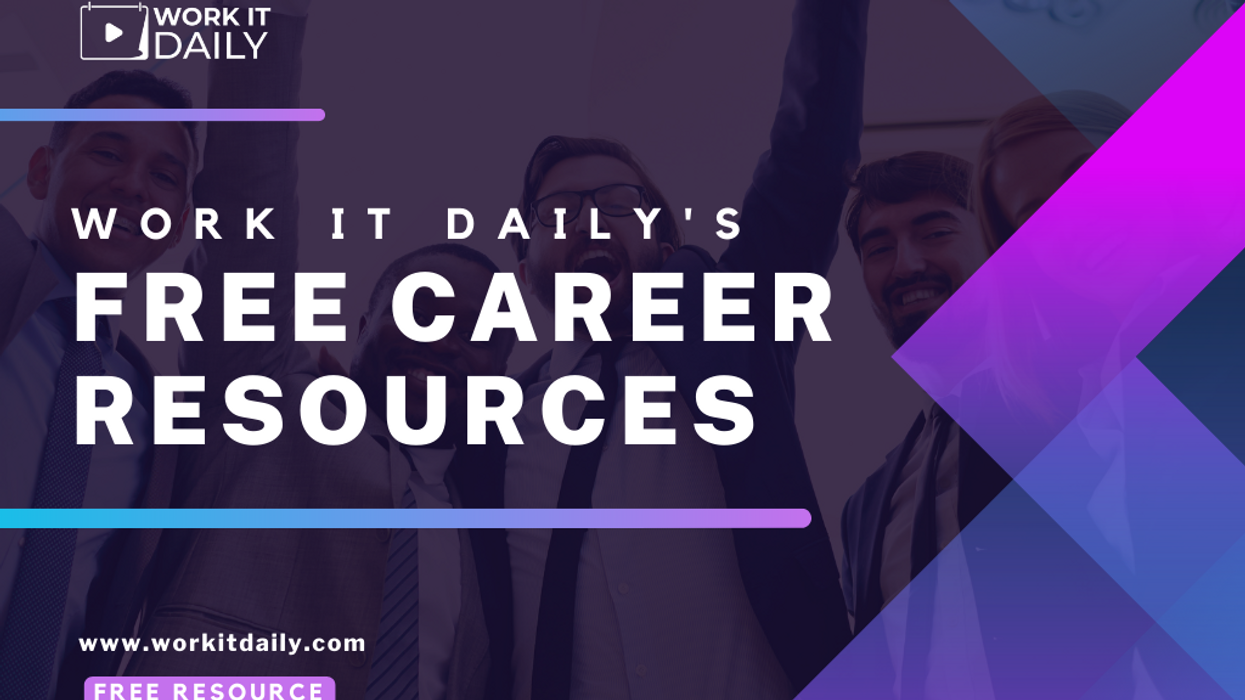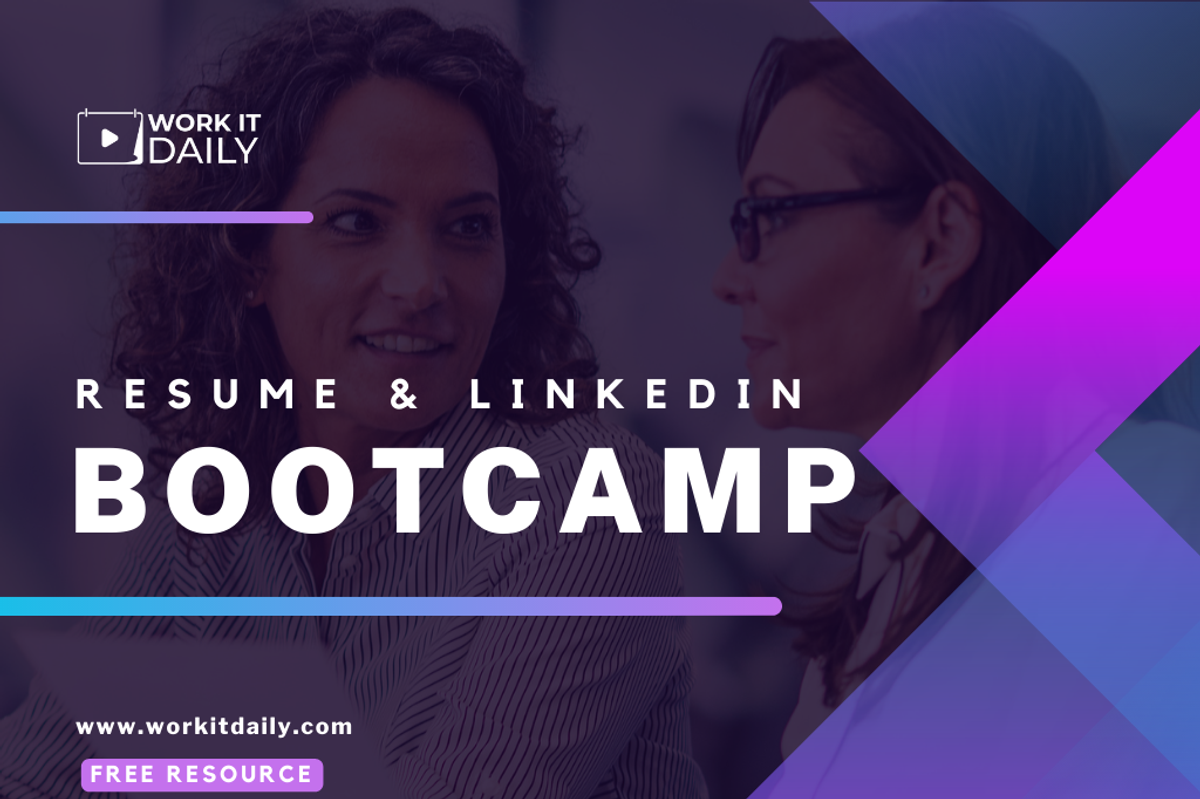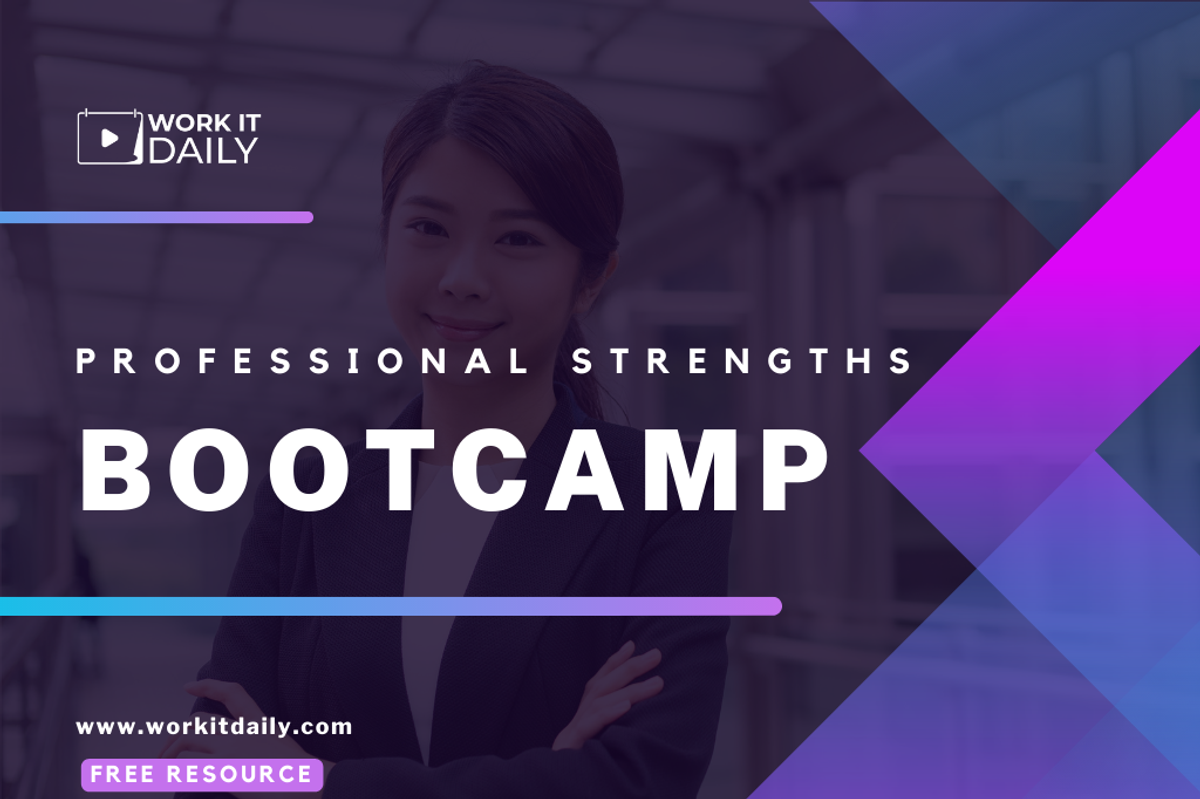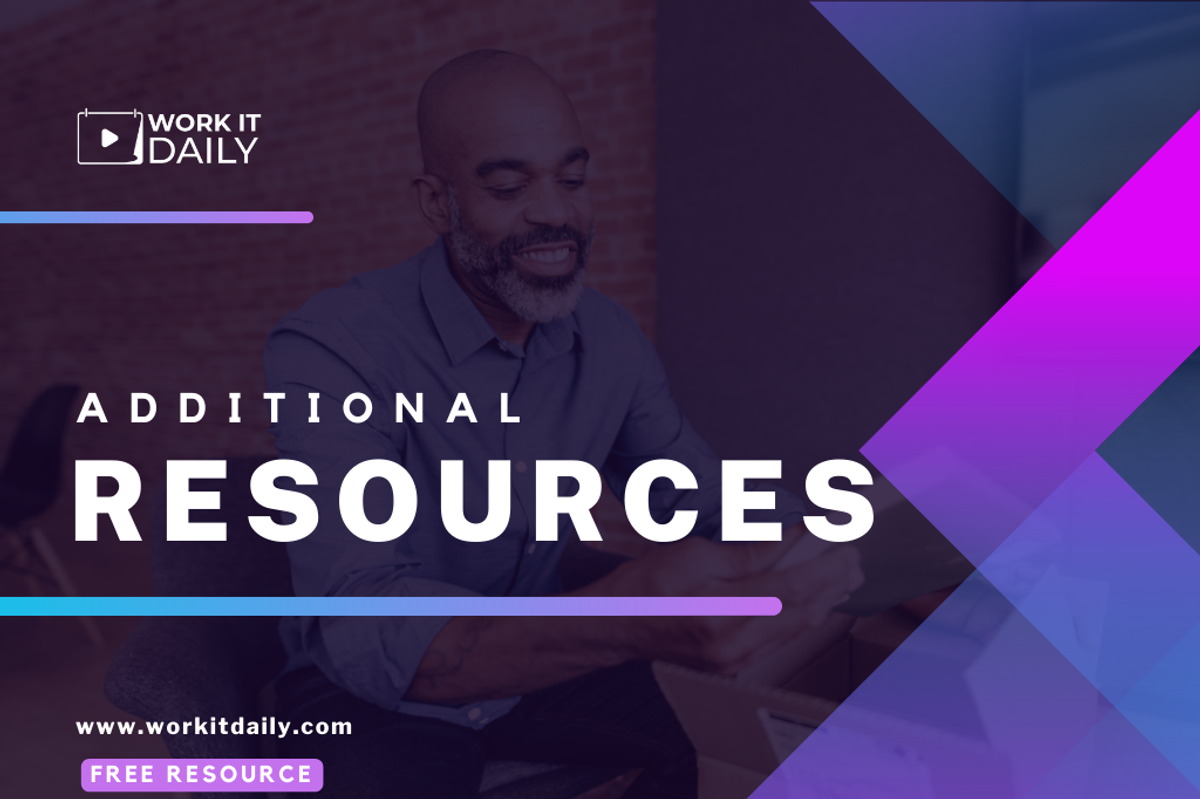
In your career, you might climb the ladder and reach a point where it’s time for you to present updates to C-suite members. This is a big opportunityâone you don’t want to mess up. Presenting to the C-suite can be nerve-wracking, but, thankfully, there are many tips that can help you prepare for this opportunity.
We recently asked our leading executives how to present updates to C-suite members.
Here are their responses…
Melodie Turk, Learning Experience Executive
Presenting updates to the C-suite is a wonderful opportunity to showcase your project, demonstrate your own executive presence, and share valuable information. Here are three steps to presenting successfully (and a fourth if you’ve already done this):
- Know Your Audience. Whether it’s one C-suite member or a group of them, make sure you understand their priorities. Also, try to find out their personal information-receiving style. Every piece of information you share will be assessed against their priorities and delivering it in a way they like to receive it will be an added bonus.
- Organize Your Information. Once you understand the audience a little better, organize your informationâthis might mean a formal PPT presentation or a detailed report, or something in between. As you put together your update, make clear correlations on how it may (or may not) impact their priorities and include any critical points they may need to make decisions in the future. You may also highlight a special achievement during the update but do relate it back to their priorities or help them understand the significance.
- Practice Your Delivery. You want to be able to deliver your update with confidence, which means you need to practice the delivery. You also need to practice giving answers to questions they may never ask. And you need to practice giving them a response when you don’t have the answer or need more time to provide a more complete answer. In my experience, this is where I have seen the biggest failuresânot being prepared.
- Delegate Your Delivery. I only recommend this fourth step if you have already given multiple updates to the C-suite. This could be a prime opportunity for you to delegate this delivery and give another person a development opportunity. If you do this, make sure to provide a personal introduction that shares just enough accolades of why you are allowing another to deliver your update.
My last tips:
- Be succinct. This doesnât mean brief (although it could be); it means making each piece of information valuable.
- Be prepared and donât make answers up on the fly. Practice what you know and be prepared to be upfront about what you donât.
Melodie Turk is a learning experience executive with a unique background in the learning and development arena as well as change management. She is passionate about bringing change to the workplaceâchange that is meaningful and change that will last.
Lynn Holland, VP Sales & Business Development

Presenting can be stressful, especially when presenting to the C-suite, but with a little effort to cater to this audience, it will set you up for success.
Whatâs that look like?
Part 1 â Right Thinking
Whether you are interviewing with, pitching, or in this case, presenting updates to the C-suite, think intently about this vision, strategy-driven vs. tactical executive-level audience that youâre going to address. Start with these questions:
- What are their roles and what is important to them about this subject matter?
- What is the data they need and how will they look to act on this data
Next, if possible, reach out to your key executives beforehand to float the agenda to see if there is anything theyâd like to add or if there are particular data points theyâre looking for, and give an opportunity for them to uncover any new details or concerns to guide your preparations.
Part 2 â Right Message
Now outline the main points and key data, tying them to a framework that is easy to convey and memorable. Something like âThe 3 KPIs that we exceeded this quarterâ and relate your points to big picture items like:
- Making money
- Saving money
- Mitigating risk
- Beating competitors
- Improving the customer or employee journey
Part 3 â Right Execution
In light of your executive-level audience, use these (5) tips to deliver a message that holds their attention and is actionable:
- Spare the big intro with context
- Give the major conclusions up front
- Use 1/3 of your allotted time to present with the balance for questions
- Always give a handout for key info
- If you use slides, no more than 10 with a clean design, heavy on images vs. text, and use a 30pt font
Lynn Holland is a business development executive with 18+ years of experience taking operational, IoT & retail technologies, products, & consumer engagement to market with a focus in petroleum & convenience retail.
Ana Smith, Talent Architect & Global Learning Strategist

Presenting updates to C-level executives can be a daunting task for many professionals, especially if they lack experience or confidence in their presentation skills. However, with careful planning, preparation, and execution, anyone can effectively communicate updates to C-level executives in a clear and concise manner. Here are some tips on how to present updates to C-level executives:
- Know your audience: It is important to research and understand the background, interests, and priorities of the C-level executives you will be presenting to. This information can help you tailor your message to their specific needs and interests. For example, if you are presenting to a CEO who is primarily interested in revenue growth, you may want to focus your presentation on the financial metrics that demonstrate progress in that area.
- Define your objectives: Before you start preparing your presentation, it is important to clearly define your objectives. This could be to provide updates on a project, share key performance metrics, or propose a new strategy. Whatever your objectives are, make sure they are clear, measurable, and aligned with the overall goals of the organization.
- Keep it simple: C-level executives are often busy and may have limited time to review your presentation, so it is important to keep your message simple and to the point. Avoid using technical jargon or complex language that could confuse or bore your audience. Instead, use clear and concise language that is easy to understand.
- Use visuals: Visual aids such as graphs, charts, and infographics can help convey complex information in a clear and concise way. Make sure your visuals are easy to read and understand and use them strategically to highlight key points and support your message. For example, if you are presenting financial data, you may want to use a graph to show trends over time.
- Practice your delivery: Practicing your delivery can help you build confidence and ensure that you are able to deliver your message effectively. Practice in front of a mirror, record yourself, or ask a colleague to provide feedback on your delivery. This can help you identify areas for improvement and refine your message.
- Anticipate questions: C-level executives may have questions or concerns about the information you are presenting, so it is important to anticipate these and be prepared to respond. Take the time to research and address potential objections or questions ahead of time. This can help you demonstrate your knowledge and expertise and build credibility with your audience.
- Follow up: After your presentation, follow up with the C-level executives to ensure that they have all the information they need and to answer any additional questions they may have. This can help build trust and credibility and demonstrate your commitment to delivering value to the organization.
Overall, presenting updates to C-level executives requires careful planning, preparation, and execution. By understanding your audience, defining your objectives, keeping your message simple, using visuals, practicing your delivery, anticipating questions, and following up, you can effectively communicate your message and achieve your objectives in a clear and impactful way.
Ana Smith helps people & organizations achieve their full talent potential by developing and co-creating people strategies and customized solutions, and turning them into impactful outcomes and collaborative relationships, using coaching as the “red thread.”
Michael Willis, Sports Business Operations Executive

High-level executivesâCEOs, CFOs, and CTOsâcan be a difficult audience because of their limited time and high demand for their time. They are demanding and might interrupt the presentation whenever needed.
I might even go as far as to ask other colleagues who have already made a presentation to these C-suite executives. There could be some tangible takeaways from knowing what another group experienced.
You must prepare thoroughly with these three points to keep in mind:
1. Know Your Audience
You must prepare your presentation knowing how your audience will use the information youâre putting out. The information must be directly linked to their ability to do their job. These executives donât deal with the nitty-gritty details. They deal with âbig pictureâ issues.
2. Start at the End
Consider the main point you are here to prove with your presentation and state it first. A clearly stated objective works to retain the interest of the executives. This is the time for your hook.
Remember, these types of executives think strategically. They donât think about day-to-day operations. Structure the presentation around the big picture.
3. Manage the Presentation
The presenter will be the central part of the executiveâs attention. Itâs okay to use visuals but donât dwell on them.
Difficult questions are to be expected when presenting to a C-level audience. It isnât unacceptable to admit that you donât know the answer to a question. Donât try to bluff a C-level crowd.
Donât go into overtime. End the meeting on time!
Michael Willis has 18+ years of experience working with accounting & sports organizations and has managed P&Ls of $10M – $125M+ with budgets of $3M-$50M+. He worked for the NFL for 22 1/2 years, mainly with the game officials working on the financial/accounting side of the business.
Kathryn Marshburn, Music Program Manager

âWhile many teams find communicating with executives to be intimidating, I have found that it’s an opportunity to showcase projects, develop visibility within organizations, and provide a roadmap for driving revenue.
Three tips for preparing for C-suite meetings should include:
- Know your audience and invite strategically, where not only decision makers are present but lateral team leaders who report to decision makers are present. This allows for consensus building before the meeting, where you can network for feedback prior to the meeting to get a sense of potential buy-in and prepare for any potential objections ahead of time.
- Prepare PowerPoint slides for support, to provide context, and to move into data and analysis quickly. Most executives are busy and require little information to make a decision, so keep providing talking points and revenue reports for the best time effectiveness. Allow space for questions during the presentation. If at all possible, share projected revenue results and/or expense for topic being presented.
- Preparation, preparation, and more preparation. Be natural and observe others. It’s always tempting to just read reports and use notes, yet I find I am most impressed when a speaker can tell the story without looking at notes or the presentation and interacts with attendees. To me, this skill comes from true well-thought-out prep and practice. No one is a good speaker right from the start, but working and reviewing the data in a calm setting and investing time to feel prepared is SUPER valuable and should not be underestimated.
Finally, remember to have a meeting buddy that ahead of time can listen to your presentation and ask questions that pertain to your deal points. If you follow these suggestions you are bound to have an amazing C-suite meeting!
Kathryn Marshburn has spent 12+ years in the music and gaming industries guiding teams on identifying targeted goals with an agile approach resulting in driving revenue and reducing risk.
Mark Taylor, Product & Operations Executive

A companion to last weekâs discussion about effective presentations. Some complementary thoughts:
- No surprises. Make sure negative news is pre-communicated.
- The answer is yes. Now, whatâs the question? But…
- …tell the truth. (Note the difference between âthe truthâ and âthe truth, the whole truth, and nothing but the truth.â)
- DYDWYSYWGTD? âDid you do what you said you were going to do?â If in the last meeting you said X, Y, and Z would be completed within the week, make sure that they were killed off 100%. (Tasks can be like cockroaches…)
- Be concise. Use minimal decks. (There was feedback last week about how difficult it is to create a short deck. Understand that thatâs what they pay you the big bucks for! Your grasp and oversight of what you own should be such that you can condense the complex into a simple short story.)
Mark Taylor has 20+ years of risk, technology, and product management experience working in global and regional financial services firms in the UK and the U.S. He’s managed teams of 40+, successfully addressed 100+ regulatory issues, and has saved companies $15M+.
Lisa Perry, Global Marketing Executive

âPresenting updates to C-suite is an extraordinary opportunity to showcase your skills, strategic thinking, and organizational contributions. Every time this opportunity arises, seize it enthusiastically and prepare to make a lasting impression. Here are 10 strategies and tips for presenting updates to C-suite members to propel your career to new heights:
1. Determine Your Purpose: Clarify your purpose, aligning your objectives with their strategic priorities. What do you want the C-suite members to do, think, or feel due to your presentation?
2. Understand Their Perspective: Executives focus on high-level strategic goals, financial performance, and organizational success. Tailor your presentation to their priorities, needs, and concerns. Frame your updates in a way that highlights the impact on the companyâs bottom line, growth potential, or competitive advantage.
3. Craft A Compelling Narrative: Tell a story that engages the C-suiteâs attention and resonates with their aspirations for the company. Connect your updates to the companyâs mission, vision, and values. Weave a narrative that demonstrates the significance of your work and the positive impact it has on the organizationâs trajectory.
4. Highlight Key Metrics & Results: Clearly articulate key metrics and outcomes in your update. Whether itâs financial performance, customer acquisition, or market share growth, provide tangible evidence of progress. Utilize charts, graphs, or visual aids to make the information more digestible and impactful.
5. Be Confident & Concise: Project an aura of self-assurance and professionalism. Deliver your updates with clarity and brevity, focusing on the most critical points. Avoid overwhelming them with excessive information or unnecessary details. Ensure your presentation is concise and visually appealing, allowing the C-suite to grasp key takeaways quickly.
6. Communicate Risks & Mitigation Strategies: Acknowledge potential risks or challenges related to your update and present well-thought-out mitigation strategies. Addressing potential roadblocks and demonstrating your ability to navigate them effectively shows your preparedness and commitment to success.
7. Provide Strategic Recommendations: Offer strategic recommendations aligned with the C-suiteâs goals. Leverage your expertise to suggest innovative solutions, growth opportunities, or operational improvements. Presenting actionable recommendations demonstrates your proactive thinking and ability to contribute to the companyâs success.
8. Anticipate Questions & Prepare Responses: The C-suite has probing questions or seeks additional clarification. Anticipate potential inquiries based on the information you present and prepare thoughtful responses in advance.
9. Engage In Active Dialogue: Presenting updates to the C-suite should be viewed as a two-way communication opportunity. Encourage engagement and invite questions, feedback, and discussion. Actively listen to their insights and perspectives.
10. Follow Up & Follow Through: Take the initiative to follow up with the C-suite members. Address any unanswered questions or concerns they may have raised. Provide additional information or data as necessary.
Presenting updates to C-suite members is an invaluable opportunity to demonstrate your skills, strategic thinking, and contributions to the organization. By embracing the opportunity and delivering a compelling presentation, you can establish yourself as a trusted advisor and elevate your career.
Lisa Perry helps companies build leadership brands, driving loyal customers & delivering profitability. She does this through a process that builds brands consumers love. Her goal is to help companies develop, monetize, and grow their brands.
What are your best tips for presenting updates to C-suite members? Join the conversation inside Work It Daily’s Executive Program.















































































